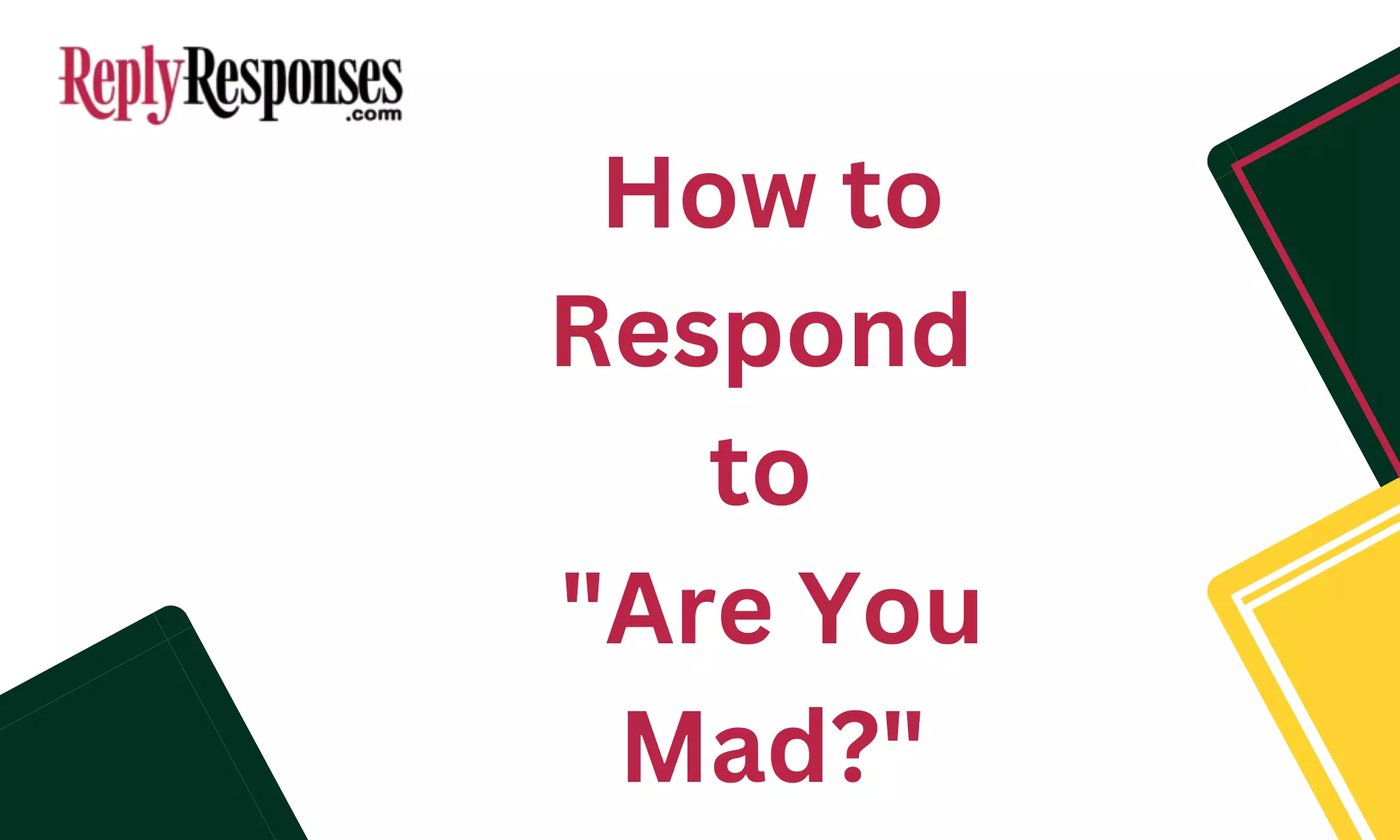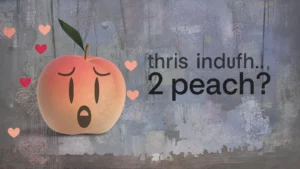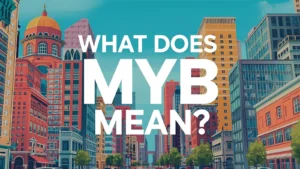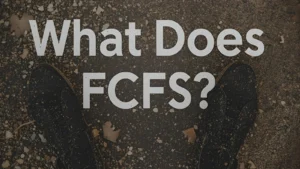When someone asks, “Are you mad?” it’s usually because they sense tension or think they’ve upset you. How you respond can help ease the situation or clarify how you feel.
“Wondering how to reply when someone asks, ‘Are you mad?’ Explore these thoughtful, funny, and honest responses to address the question with clarity and charm. Perfect for easing tension and keeping the conversation lighthearted!”
Whether you want to be honest, playful, or diplomatic, there are plenty of ways to reply depending on the situation.
Best Responses to “Are You Mad?”
1. “No, I’m not mad. Just thinking.”
Scenario: They misread your quietness for anger.
Impact: Clears up confusion and keeps things calm.
2. “Not mad, just a little frustrated.”
Scenario: You want to be honest but not escalate the situation.
Impact: Keeps the tone neutral and explains your feelings.
3. “Why would I be? Everything’s fine.”
Scenario: You’re reassuring them that nothing’s wrong.
Impact: Calm and reassuring, putting their mind at ease.
4. “Nope, I’m good! Just in deep thought.”
Scenario: You’re explaining that your mood has nothing to do with anger.
Impact: Clears up confusion with a positive tone.
5. “Maybe a little, but I’ll get over it.”
Scenario: You’re admitting slight annoyance but not making a big deal.
Impact: Honest yet light, showing you’re willing to move on.
6. “I’m not mad, I just need some space right now.”
Scenario: You’re explaining that you need a break, not that you’re angry.
Impact: Helps set boundaries without escalating things.
7. “I’m more disappointed than mad.”
Scenario: You’re being honest about your feelings without sounding too harsh.
Impact: Honest but calm, encouraging resolution.
8. “No, but we should talk about what’s bothering me.”
Scenario: You’re not angry but want to address an issue.
Impact: Opens up a constructive conversation.
9. “Why do you think I’m mad?”
Scenario: You ask them to explain why they think you’re upset.
Impact: Encourages communication and clarification.
10. “Nah, just in need of some coffee!”
Scenario: You’re adding humor and shifting the focus to something light-hearted.
Impact: Turns the moment into a joke, easing tension.
11. “Nope, just recharging my batteries.”
Scenario: You’re explaining that you’re not angry, just quiet.
Impact: Keeps things calm and light-hearted.
12. “Not mad, just a bit stressed.”
Scenario: You’re clarifying that your mood is due to stress, not anger.
Impact: Honest and explanatory, helping them understand your feelings.
13. “No, I’m not mad, just in a thinking mood.”
Scenario: You’re explaining that you’re lost in thought, not angry.
Impact: Clears up any misunderstanding with a calm tone.
14. “I’m not mad, but I’m not exactly thrilled either.”
Scenario: You’re being honest about not being entirely happy but not angry.
Impact: Light yet honest, allowing for further discussion.
15. “I’m fine, just a little distracted.”
Scenario: You’re clarifying that your mood is unrelated to anger.
Impact: Reassuring and calm, helping them relax.
16. “Nope, not mad. Why do you ask?”
Scenario: You’re opening the door for them to explain their concern.
Impact: Encourages open communication while staying calm.
17. “No, but I appreciate you checking in.”
Scenario: You’re being kind and acknowledging their concern.
Impact: Positive and appreciative, easing any tension.
18. “Not at all! Just processing things.”
Scenario: You’re explaining that you’re in a reflective mood, not an angry one.
Impact: Calms the situation with a thoughtful response.
19. “I’m not mad, but I feel a little off today.”
Scenario: You’re explaining that you’re not feeling great without assigning blame.
Impact: Honest and introspective, opening up the conversation.
20. “Not mad, just trying to stay calm and focused.”
Scenario: You’re clarifying that you’re concentrating, not upset.
Impact: Reassuring and calm, helping to ease concerns.
21. “No, just trying to figure something out in my head.”
Scenario: You’re explaining that you’re deep in thought, not angry.
Impact: Clears up confusion while keeping the tone light.
22. “Nope, but now I’m curious why you think I am.”
Scenario: You’re gently probing for more information about their concern.
Impact: Encourages dialogue while maintaining a calm tone.
23. “Not mad, just in my world for a moment.”
Scenario: You’re explaining that you’re lost in thought, not upset.
Impact: Light-hearted and reassuring, clarifying your mood.
24. “I’m not mad, just need a moment to myself.”
Scenario: You’re setting a boundary without sounding angry.
Impact: Calm and clear, helping to manage expectations.
25. “No, but I am a little annoyed. Let’s talk about it.”
Scenario: You’re being honest but willing to resolve the issue.
Impact: Honest and constructive, showing a willingness to address the problem.
26. “No, I’m not mad. Just having a quiet moment.”
Scenario: You’re explaining that your silence doesn’t mean you’re angry.
Impact: Reassuring and calm, keeping the conversation light.
27. “Nope! Just saving my energy for later.”
Scenario: You’re being playful about why you seem off.
Impact: Light-hearted and funny, shifting the focus away from anger.
FAQs
What are some honest ways to reply to “Are you mad?”
- Sincere responses for open communication.
How can I respond humorously to “Are you mad?”
- Playful replies to lighten the mood.
What should I say if I’m upset?
- Constructive ways to express your feelings.
How do I respond if I’m not mad at all?
- Reassuring replies to clear up any misunderstanding.
What are some flirty ways to answer “Are you mad?”
- Romantic or teasing responses to shift the tone.
How can I reply diplomatically in a professional setting?
- Polished responses are suitable for workplace interactions.
What should I say if I want to deflect the question?
- Clever ways to avoid directly answering.
How do I handle the question when I’m too emotional to talk?
- Calm and composed replies to buy some time.
What are some sarcastic comebacks to “Are you mad?”
- Witty responses to keep the conversation playful.
Why is it important to address the question “Are you mad?” thoughtfully?
- Insights on how a good response can improve communication and relationships.

Stuck on what to say? ReplyResponses.com gives you clever, funny, and savage comebacks for every moment — because silence isn’t golden when you can drop a perfect reply!












